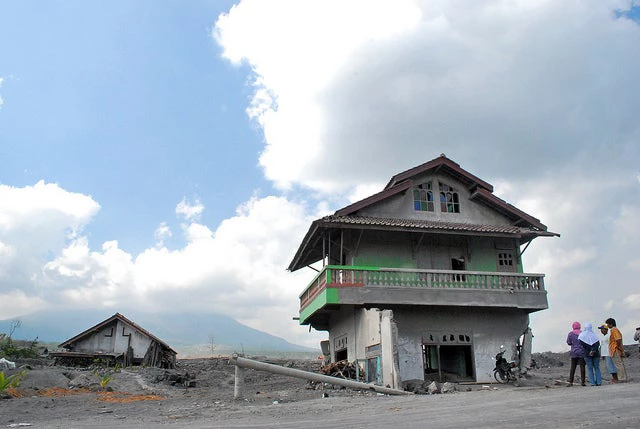Volcanic eruptions capture the imagination with their awe-inspiring power, but why don’t they capture the attention of decision makers and development professionals working to build resilient communities? People visit Pompeii in the shadow of Mt. Vesuvius, and see the once thriving community destroyed within minutes from a major past eruption, but it does not resonate with their day-to-day lives. We see spectacular footage of erupting volcanoes in the media, but we rarely think about what it means for communities who live within the reach of the multiple volcanic hazards that can occur during eruptions.
This wasn’t always the case. For 11 years from 1980, volcanic eruptions were at the forefront of the minds of those working in disaster risk management. At the opening of the decade, Mt. St. Helens violently erupted, claiming the lives of 57 and causing over USD1 billion in damage in the USA. Two years later, El Chichon erupted in Mexico killing at least 2,000. In 1985, a very minor eruption of Nevada del Ruiz volcano triggered a massive deadly mudflow (lahar) that killed 23,000 people in the town of Armero, Colombia. A year later, 1,700 people were killed in their sleep by volcanic gases from Lake Nyos volcano in Cameroon.
In 1991, the world witnessed the largest eruption in a century, when Mt. Pinatubo reawakened after 800 years right on the northern doorstep of Manila, Philippines. Early warnings by scientists from the Philippine Institute of Volcanology and Seismology and the US Geological Survey prompted the successful evacuation of 200,000 people, including 20,000 indigenous Aeta highlanders. Nonetheless, 350 people died in the eruption, 200,000 were left homeless, and the global temperature fell by 1.5°C.
Since then, most eruptions have (fortunately) occurred in relatively unpopulated areas, and whilst inconvenient and expensive for businesses – such as the Icelandic volcanic eruption of 2010 which grounded flights across Europe – they have been fairly benign. As a result, the popular perception of volcanoes is that they are interesting, fascinating, and perhaps disruptive for air travelers, but ultimately not deserving of focus when other disasters are more frequent and impactful in terms of lives lost and damage on the ground.
I would argue (and, admittedly, I am a recovering volcanologist – a rarity at the World Bank Group!) that we have become dangerously complacent about the risk from volcanoes, and that we are doing a disservice to our clients by not highlighting this potential risk alongside other disaster risks and shocks. To put this risk in context, one-third of the World Bank’s client countries have volcanoes that are potentially active, and in these countries more than 722 million citizens live within the reach of damaging and potentially fatal volcanic hazards.
Alternatively, consider the following scenario: in 1815, Mt. Tambora erupted violently in eastern Indonesia, killing 10,000 immediately and tens of thousands in the days, weeks, and months after the eruption (mostly as a result of starvation). Countless thousands died in Europe as famine plagued the continent as the “year without summer” was triggered by the amount of volcanic ash in the atmosphere. But what if that eruption actually took place 201 years later – with today’s population – instead we would need to evacuate millions of people, and consider how to support the more than 100 million in Indonesia affected by volcanic ash – ash which damages crops, pollutes water sources, and wreaks havoc with critical infrastructure. Similar analysis for the 1883 Krakatau eruption paints an equally frightening picture when today’s population and infrastructure are considered.
Are we prepared for such volcanic crises? We can certainly be better prepared in many areas. For example, we should address the questions of: ‘How do we educate communities and decision makers who have not seen a volcanic eruption in their lifetime?,’ and ‘How can we make sure that volcanic risks are routinely considered alongside all the other risks that countries face?’
GFDRR, through its Challenge Fund and in partnership with Bristol University, Global Volcano Model and the World Organization for Volcano Observatories, have produced new short (fewer than 5 minutes) educational films on volcanic risks and how communities can become more prepared. Moreover, for those working in development who are now wondering if there are volcanic risks in Uganda, Argentina, Caribbean etc., the GFDRR tool Think Hazard! is here to help – providing a simple tool to help measure volcanic risks (very low to high) and offer information on how to mitigate these risks during project planning.
Communicating the risk of these potentially devastating events is the first step to ensuring that governments and development partners take the necessary steps to ensure that communities are safe from disasters of all kinds – including those just beneath the surface.
Related
Video: Pyroclastic flows: The impacts
Video Playlist



Join the Conversation